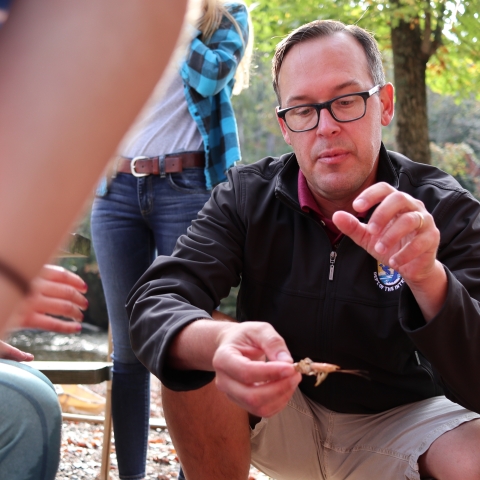
160 Zillicoa St.
Asheville, NC 28801
United States
About Mark Endries
Mark’s primary responsibilities include working with the U.S. Army Corps of Engineers, Federal Highway Administrations, and the North Carolina Department of Transpiration to fulfill requirements laid out in section 7 of the Endangered Species Act. Section 7 Section 7
Section 7 Consultation
The Endangered Species Act (ESA) directs all Federal agencies to work to conserve endangered and threatened species and to use their authorities to further the purposes of the Act. Section 7 of the Act, called "Interagency Cooperation," is the mechanism by which Federal agencies ensure the actions they take, including those they fund or authorize, do not jeopardize the existence of any listed species.
Learn more about Section 7 of the Act mandates that federal agencies can’t jeopardize the existence of a species of destroy or adversely modify habitat critical to the recovery of a threatened or endangered species. Mark works with agencies involved with transportation projects to identify and minimize or eliminate negative plant, fish, and wildlife impacts from projects they fund or authorize.
He has an extensive background in multiple facets of the Endangered Species Act, including analyzing data used for decisions on which species receive Endangered Species Act protection and implementing recovery efforts for threatened and endangered species – both part of obligations set out in section 4 of the Endangered Species Act. Prior to the Service, Marks spent many years working for the Florida Fish and Wildlife Conservation Commission.





